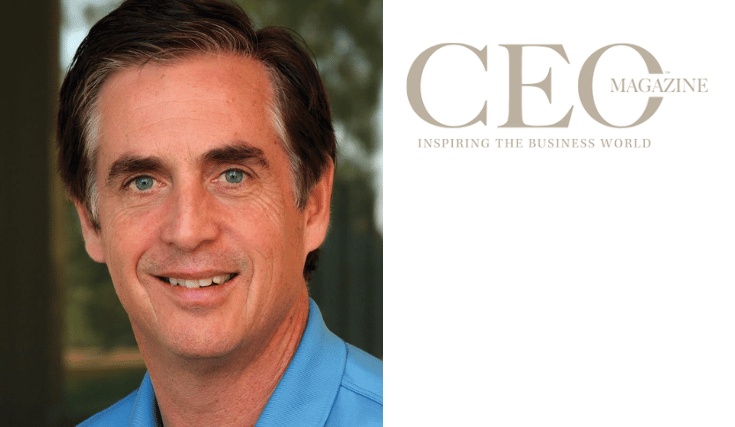Greg Campbell is a natural problem-solver. The more complex and difficult the dilemma, the better. So it’s no surprise that the issue he has chosen to tackle as an entrepreneur is climate change.
“I love the book by Jim Collins that talks about big, hairy, audacious goals,” he says. “I can’t think of a bigger goal than trying to tackle this climate change problem that we all face.”
Greg is the CEO of VGrid Energy Systems, a California-based company that converts agricultural waste into electricity while capturing carbon from the waste and converting it into products, like animal feed and soil enhancers, which keep the carbon out of the atmosphere.
VGrid sells carbon-negative electricity at a discounted rate to clients such as farmers and agricultural businesses, while removing biowaste for them for free, meaning customers save money on both waste removal and power.
The business model is based on a technology called gasification, which has been in use for decades but has not enjoyed mass adoption in the energy market because of longstanding technical difficulties: the process tends to clog up machines.
“I can’t think of a bigger goal than trying to tackle this climate change problem that we all face.”
“We did a lot of work in developing technology software solutions, machine learning, different types of agitation and vibration techniques to get things to run smoothly and reliably over long periods of time,” Greg explains.
The next technological hurdle to overcome was getting electrical generators to run more effectively on syngas, the fuel that is produced by the gasifiers and which has a much lower heat value than traditional fuels.
“We had to build our own microprocessor-controlled mixing system to accurately control the air-fuel ratio and maintain good emissions out of the engine,” he adds. “So there are a lot of smart people doing a lot of good work in that area.”
Tapping retail:
In the coming five years, VGrid’s goal is to have 1,000 of its machines installed across the US producing 360 million kilowatt hours annually, which will prevent the emission of 180,000 tons of carbon dioxide from natural gas and 264,000 tons of emissions from agricultural waste.
The company also has global ambitions and is in discussions with a potential partner to begin operations in Australia.
“The whole thing that really makes our business model work is the ability to sell the carbon.”
In order to really scale up, Greg says VGrid is looking for a large retail partner through which it can sell products made from the carbon it captures from bio waste. The company has already produced a cat litter deodorizer and a horse stable deodorizer, as well as various animal feed and soil enhancement products.
However, there are plenty more ways that it can monetize this by-product. “But the whole thing that really makes our business model work is the ability to sell the carbon,” he shares.
To demonstrate this, he offers a hypothetical: if VGrid charges US$0.12 per kilowatt hour for the electricity from one of its machines, it can make about US$12 per hour. But in that hour, the machine also produces 40 pounds of carbon, which VGrid can sell for about US$80.
A key goal now is to find a partner with a large footprint and deep institutional knowledge in product innovation to tap that extra value. “I would love to find a big retail customer partner such as Walmart or Target and work with them to develop private-label products. The carbon can be used in a whole host of different applications in health and beauty, like shampoo, toothpaste and deodorant,” Greg points out.
Stern optimism:
Greg is also hoping to catch the attention of major thought leaders in the business world who are interested in climate change and making their operations carbon neutral, or even carbon negative.
“Marc Benioff and Salesforce have got this 1t.org initiative that has pulled a whole bunch of corporate leaders together to plant a trillion trees. That’s awesome. I’d love to tap into that,” he says.
“I know Microsoft and Google and Amazon are all committed to being carbon neutral. Microsoft even announced recently they want to be carbon negative. So we want to find some corporate partners that need to use renewable energy and could assist us in return.”
“I would love to find a big retail customer partner such as Walmart or Target and work with them to develop private-label products.”
VGrid works toward these ambitious goals by setting clear, definable objectives with explicit deadlines and for which specific people and teams have accountability.
“We have objectives that get everybody on the same page, and we make sure not to have too many of them, to focus on the majors and not the minors,” Greg explains. “Someone has to own achieving that objective, and they have to be given the resources necessary to be able to do it. You need to have a time and date on the objective so that you can make sure you are progressing quickly, because as a startup, time is kind of our enemy.”
Another thing that keeps Greg going is a stern optimism that the biggest problem facing humanity can be solved. “If we can plant more trees to pull more CO2 out of the atmosphere and stop CO2 from going back into the atmosphere by preventing the burning and the decomposition of dead trees, then we can bend the curve back down,” he stresses. “Nature has given us the solution.”

